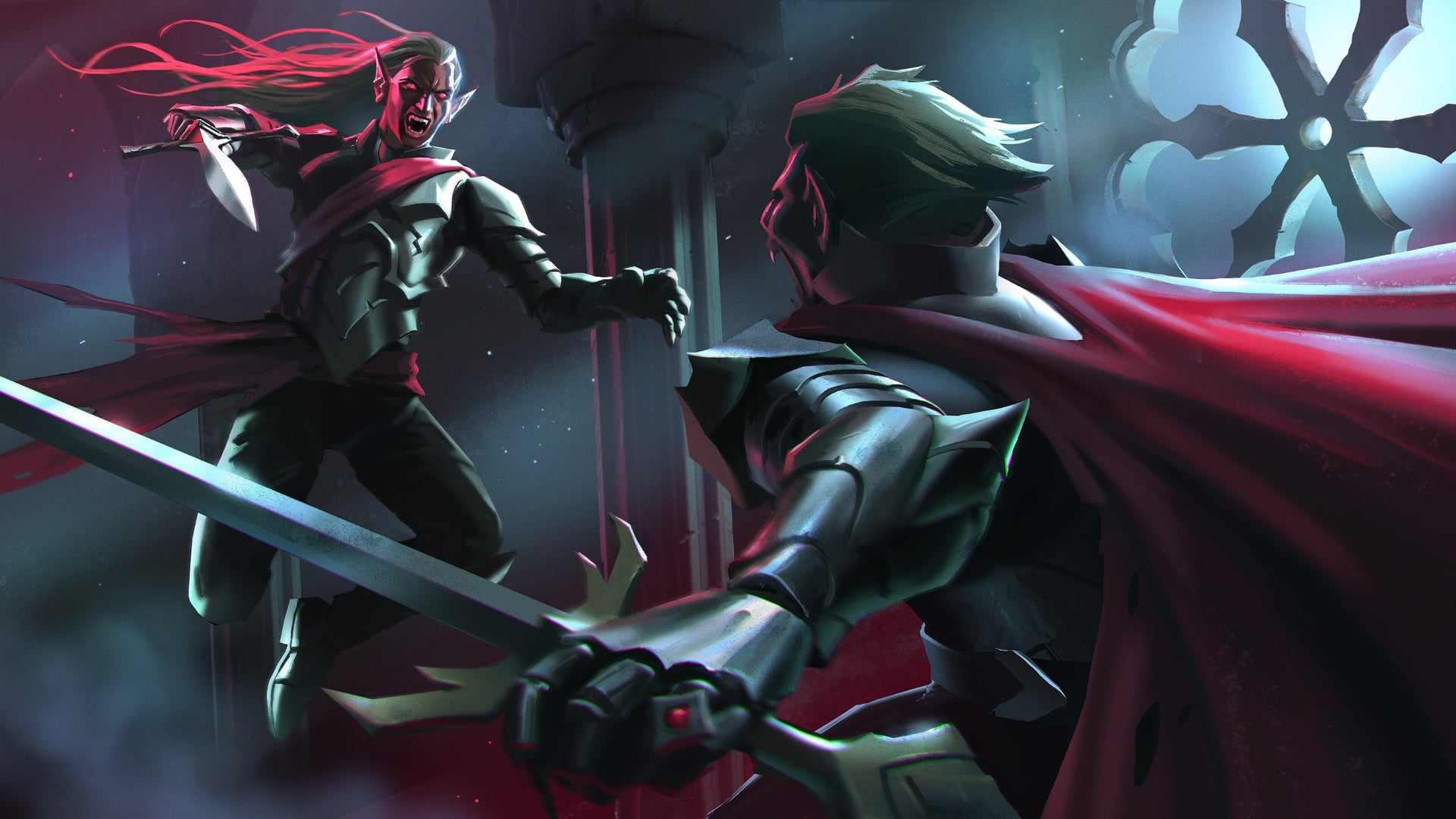Fielding, who usually works remotely from Florida, flew over to Stunlock’s Sweden office for the game’s early access release last month. The team celebrated the launch together, watching the player numbers tick up. “We were freaking out and celebrating at, like, 10,000 [people],” Fielding says. “This is my first game release, and when we hit 20K, I was like, ‘wow, this is great. We did it.’ And I just had no idea how far it would go.” There’s no way to precisely know why some games absolutely blow up like V Rising has, but Fielding reckons there are at least a few factors at play for them. Firstly, there’s the survival genre. “Everybody knows what it’s like to be hungry,” says Fielding. “Everybody knows what it’s like to be afraid of the dark, or out alone and scared.” So, while you might not exactly have first hand experience of the vampire lifestyle, there’s something relatable there. It’s also a great genre to play with friends, meaning there’s been plenty of spread by word of mouth. But, says Fielding, V Rising hasn’t necessarily been developed by people who are saturated in the survival genre, which has its own advantages. Stunlock’s past games have been more PvP focused, and when the team wanted to go in a new direction, they were “not just trying to [work from] preconceived ideas,” says Fielding. “They just really wanted to make something that was fun for them. …I think approaching from that allowed them to design a game that anybody could grab onto.” The same goes for the game’s vampiric lore. While vampires have enjoyed a long popularity, they’re having a bit of a memetic moment right now (#MorbiusSweep). But the cultural spotlight waxes and wanes, and when development began on V Rising a few years ago the team couldn’t have predicted the timing. And Stunlock didn’t want to go down the traditionally popular routes with their vampires, either. Fielding points out that V Rising’s bloodthirsty protagonists are neither especially spooky nor particularly hot. Instead, their particular vampire vibe spawned from the image of “a guy crawling out of a coffin and just eating a rat.” Whatever the reason, the game’s been an undeniable success already. But the team has been clear that they still have a lot of work that they want to put into the game as it makes its way towards full release. “The things that we’re putting out now are really fairly basic versions of the game that we envision,” says Fielding. “The servant systems need to be more in depth, the castle building needs to be more in depth. The gear and the spells and everything, there needs to be more.” In other words, the focus before launching in early access was ensuring that all of the basic systems were in place, but the focus as the game progresses towards 1.0 will be around fleshing out those systems. It’ll be a few months before those additions make it into the game, though. Fielding reiterated the plan laid out in Stunlock’s recent developer update, which says the next major patches will be in the autumn. In the meantime, Stunlock are working on more immediate, smaller concerns, like bug fixes and quality of life improvements. One thing on the short term radar is ensuring that players can ignore one another in chat, for example, as well as tweaks for greater accessibility. And CJ will be pleased to hear that there is discussion happening internally about an arachnophobia setting, although with the focus understandably being on putting out fires Fielding couldn’t promise it’ll be on the horizon any time soon. On the community side, Fielding and the rest of the team are getting accustomed to working with the game’s suddenly massive player base. “It’s really important to me that we have a presence in our community, that people see us there listening,” he says. They’re currently developing processes that will allow them to more easily take and sort feedback and bug reports, and give technical support in return. “We have over 1.5 million players,” Fielding says. “And we are a team of 37 people. The community team is two people. …So it’s just sort of, right now, keeping everything not on fire.” For the most part, though, he says the community has been pretty understanding, and the team has been able to enjoy their unexpected popularity. “We made something that we love, and the fact that other people are connecting with that in the same way…the mood around the studio’s been really great. Everyone’s really happy,” says Fielding.
